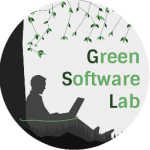Helping developers write energy efficient Haskell through a data-structure evaluation – Gilberto Melfe, Alcides Fonseca, João Paulo Fernandes
How a program is written has implications in the energy consumption of the running system, with economical and environmental consequences.
In this context, understanding the energy consumption of operations on data-structures is crucial when optimizing software to execute under power constricted environments. Existing studies have not focused on the different components of energy consumption that processors expose, rather considering the global consumption.
To understand the relationship between CPU and memory energy consumptions with execution time, we instrument a microbenchmark suite to collect such values, and we analyze the results.
Our benchmark suite is comprised of 16 implementations of functional sequences, collections and associative collections while measuring detailed energy and time metrics. We further investigate the energy consumption impact of using different compilation optimizations.
We have concluded that energy consumption is directly proportional to execution time. Additionally, DRAM and Package energy consumptions are directly proportional, with the DRAM representing between 15 and 31% of the total energy consumption. Finally, we also conclude that optimizations can have both a positive or a negative impact on energy consumption.

